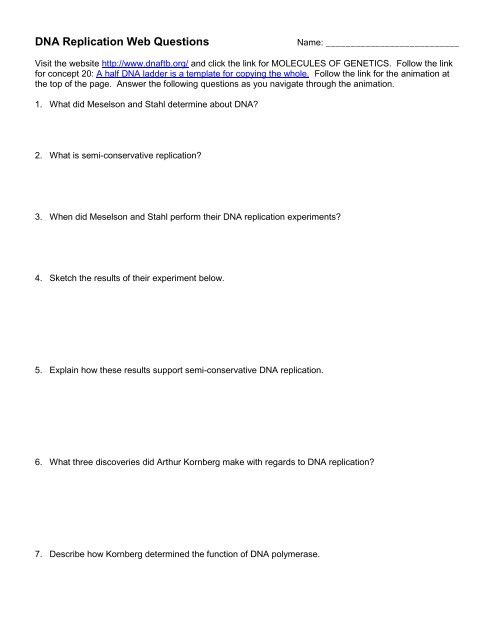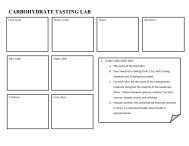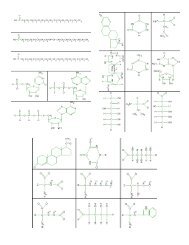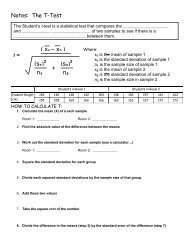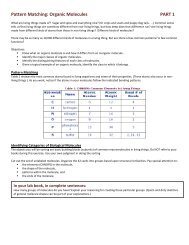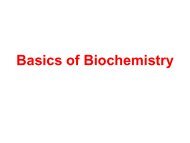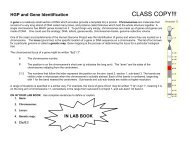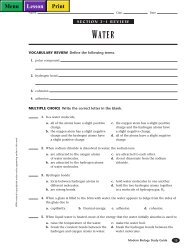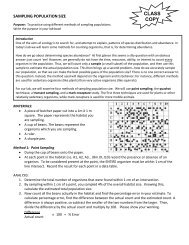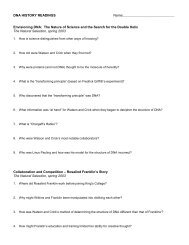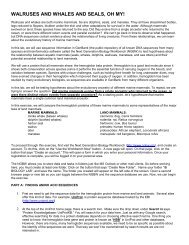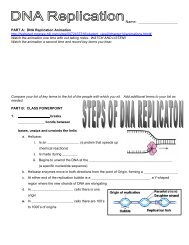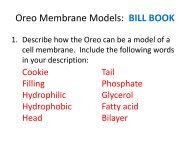DNA Replication Web Questions - Biology for Life
DNA Replication Web Questions - Biology for Life
DNA Replication Web Questions - Biology for Life
- No tags were found...
Create successful ePaper yourself
Turn your PDF publications into a flip-book with our unique Google optimized e-Paper software.
<strong>DNA</strong> <strong>Replication</strong> <strong>Web</strong> <strong>Questions</strong>Name: ___________________________Visit the website http://www.dnaftb.org/ and click the link <strong>for</strong> MOLECULES OF GENETICS. Follow the link<strong>for</strong> concept 20: A half <strong>DNA</strong> ladder is a template <strong>for</strong> copying the whole. Follow the link <strong>for</strong> the animation atthe top of the page. Answer the following questions as you navigate through the animation.1. What did Meselson and Stahl determine about <strong>DNA</strong>?2. What is semi-conservative replication?3. When did Meselson and Stahl per<strong>for</strong>m their <strong>DNA</strong> replication experiments?4. Sketch the results of their experiment below.5. Explain how these results support semi-conservative <strong>DNA</strong> replication.6. What three discoveries did Arthur Kornberg make with regards to <strong>DNA</strong> replication?7. Describe how Kornberg determined the function of <strong>DNA</strong> polymerase.
Watch the animations and answer these questions as you go along –http://highered.mcgraw-hill.com/sites/0072437316/student_view0/chapter14/animations.html#How Nucleotides are added in <strong>DNA</strong> replication? (Animation)1. List the proteins/enzymes involved in the process of replication.2. How does replication start? Who prevents the unwound <strong>DNA</strong> <strong>for</strong> twisting back?3. Which enzyme is the key player in <strong>Replication</strong>? What is this enzyme’s limitation? How is thislimitation overcome?4. Why the two strands of the helix have to be elongated by two slightly different mechanisms?5. Explain elongation stage of replication – you answer should include a discussion of leading strand,lagging strand, Okazaki pieces and RNA primer.<strong>DNA</strong> replication <strong>for</strong>k (Animation)6. Draw a picture of the replication <strong>for</strong>k and label all the components therein.7. How are Okazaki fragments on the lagging strand joined into one continuous strand?8. How do eukaryotes speed the process of replication – since they have multiple long chromosomes?


